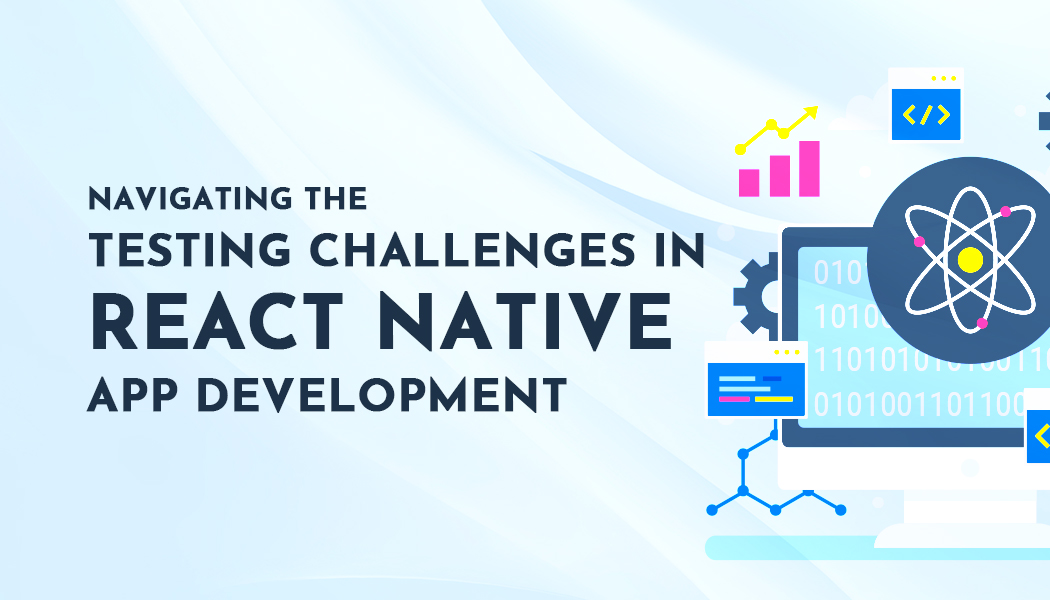Navigating the Testing Challenges in React Native App Development
Introduction
React Native, the popular framework for building cross-platform mobile applications, has revolutionized the way developers create mobile apps. With its ability to write code once and deploy it across multiple platforms, React Native offers immense advantages in terms of efficiency and cost-effectiveness. However, like any software development process, React Native app development comes with its set of challenges, particularly in the realm of testing. In this article, we will explore the unique testing challenges faced by developers when working with React Native apps and discuss strategies to overcome them.
Understanding React Native Testing
Testing is a crucial aspect of the software development lifecycle, ensuring that the application functions as intended and meets the requirements of end-users. In React Native development, testing encompasses various levels, including unit testing, integration testing, and end-to-end testing. Each level serves a specific purpose in ensuring the reliability and quality of the application.
Platform Fragmentation
- One of the primary challenges in React Native app testing is platform fragmentation. Since React Native allows developers to write code once and deploy it across multiple platforms, including iOS and Android, ensuring consistent behavior and performance across different devices and operating systems can be daunting. Testing on various devices, screen sizes, and OS versions becomes essential to identify and address platform-specific issues.
Native Modules and Third-Party Libraries
- React Native applications often rely on native modules and third-party libraries to access device features and implement complex functionalities. While these modules and libraries enhance the app's capabilities, they can introduce challenges during the testing phase. Integrating native code with React Native components requires meticulous testing to ensure compatibility, stability, and performance across platforms.
Asynchronous Nature of JavaScript
- JavaScript, the language used in React Native development, is inherently asynchronous, which means that certain operations may not execute in the expected order. Asynchronous programming introduces complexities in writing and testing code, especially when dealing with asynchronous tasks such as network requests, data fetching, and state management. Testing asynchronous code requires specialized techniques and tools to handle callbacks, promises, and async/await functions effectively.
UI Consistency and Layout Testing
- Ensuring consistent UI behavior and layout across different devices and screen resolutions is crucial for delivering a seamless user experience. However, achieving UI consistency in React Native apps can be challenging due to factors such as device fragmentation, platform-specific nuances, and dynamic layout rendering. Manual testing alone may not suffice to cover all possible UI scenarios, making automated UI testing essential for detecting layout issues, visual regressions, and UI discrepancies across platforms.
Performance Optimization
- React Native applications must deliver optimal performance and responsiveness to meet user expectations. Performance optimization involves identifying and addressing bottlenecks related to rendering, memory usage, CPU utilization, and network latency. Testing the performance of React Native apps requires profiling tools, performance metrics, and simulation techniques to analyze and optimize app performance across different devices and usage scenarios.
Continuous Integration and Deployment
- In agile development environments, continuous integration (CI) and continuous deployment (CD) practices streamline the process of building, testing, and deploying React Native apps. However, configuring CI/CD pipelines for React Native projects can be challenging due to factors such as platform dependencies, build configurations, and compatibility issues. Ensuring seamless integration between development, testing, and deployment stages is essential for maintaining the velocity and quality of React Native app development.
Overcoming Testing Challenges
While the testing challenges in React Native app development may seem daunting, adopting the following strategies can help developers overcome these obstacles and ensure the quality and reliability of their applications:
Comprehensive Test Coverage
- Developers should strive for comprehensive test coverage across all levels of testing, including unit tests, integration tests, and end-to-end tests. Automated testing frameworks such as Jest, Enzyme, and Detox provide robust tools for writing and executing tests, enabling developers to catch bugs early and validate app functionality across platforms.
Device and Platform Diversity
- Testing React Native apps on a diverse range of devices, screen sizes, and OS versions is essential for identifying platform-specific issues and ensuring compatibility. Utilizing cloud-based testing services or device farms can help developers access a wide range of real devices for testing purposes, ensuring thorough coverage and reducing the risk of device fragmentation.
Mocking and Stubbing Dependencies
- To isolate components and simulate external dependencies during testing, developers can utilize mocking and stubbing techniques. By replacing real dependencies with mock objects or stub implementations, developers can control the behavior of external modules and streamline the testing process, reducing dependencies on external resources and improving test reliability.
Performance Profiling and Optimization
- Integrating performance profiling tools such as React Native Performance Monitor or Flipper into the development workflow enables developers to identify performance bottlenecks and optimize app performance proactively. By analyzing metrics such as CPU usage, memory allocation, and network activity, developers can fine-tune their applications for optimal performance and responsiveness.
Cross-Platform UI Testing
- Implementing cross-platform UI testing frameworks such as Appium or Selenium WebDriver allows developers to automate UI tests across multiple platforms and devices. By writing reusable test scripts and leveraging cloud-based testing infrastructure, developers can validate UI consistency and behavior across different environments, reducing manual effort and improving test coverage.
Conclusion
Testing is an integral part of React Native mobile app development, ensuring that applications meet quality standards and deliver a seamless user experience across platforms. While testing challenges such as platform fragmentation, asynchronous programming, and UI consistency may pose obstacles, developers can overcome these challenges by adopting comprehensive testing strategies, leveraging automation tools, and embracing best practices for testing and quality assurance. By prioritizing testing throughout the development lifecycle, developers can build robust and reliable React Native applications that delight users and stand the test of time.




